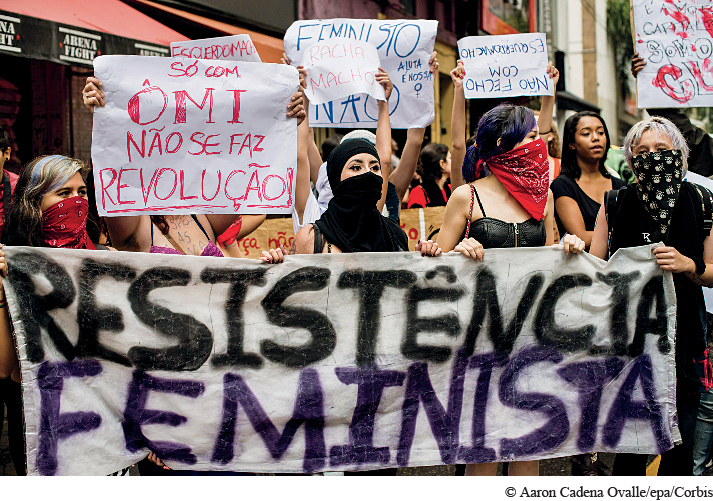International Feminism
Perhaps the most impressive achievement of feminism in the twentieth century was its ability to project the “woman question” as a global issue and to gain international recognition for the view that “women’s rights are human rights.” Like slavery and empire before it, patriarchy lost at least some of its legitimacy during this most recent century, although clearly it has not been vanquished.
Feminism registered as a global issue when the United Nations (UN), under pressure from women activists, declared 1975 as International Women’s Year and the next ten years as the Decade for Women. The UN also sponsored a series of World Conferences on Women over the next twenty years. By 2006, 183 nations, though not the United States, had ratified a UN Convention on the Elimination of All Forms of Discrimination against Women, which committed them to promote women’s legal equality, to end discrimination, to actively encourage women’s development, and to protect women’s human rights. Clearly, this international attention to women’s issues was encouraging to feminists operating in their own countries and in many places stimulated both research and action.

This growing international spotlight on women’s issues also revealed sharp divisions within global feminism. One issue was determining who had the right to speak on behalf of women at international gatherings — the official delegates of male-dominated governments or the often more radical unofficial participants representing various nongovernmental organizations. North/South conflicts also surfaced at these international conferences. In preparing for the Mexico City gathering in 1975, the United States attempted to limit the agenda to matters of political and civil rights for women, whereas delegates from third-world and communist countries wanted to include issues of economic justice, decolonization, and disarmament. Feminists from the South resented the dominance and contested the ideas of their Northern sisters. One African group highlighted the differences:
While patriarchal views and structures oppress women all over the world, women are also members of classes and countries that dominate others and enjoy privileges in terms of access to resources. Hence, contrary to the best intentions of “sisterhood,” not all women share identical interests.14
Nor did all third-world groups have identical views. Some Muslim delegates at the Beijing Conference in 1995 opposed a call for equal inheritance for women because Islamic law required that sons receive twice the amount that daughters inherit. In contrast, Africans, especially in non-Muslim countries, were aware of how many children had been orphaned by AIDS and felt that girls’ chances for survival depended on equal inheritance.
Finally, beyond such divisions within international feminism lay a global backlash among those who felt that its radical agenda had undermined family life, the proper relationship of men and women, and civilization generally. To Phyllis Schlafly, a prominent American opponent of the Equal Rights Amendment, feminism was a “disease” that brought in its wake “fear, sickness, pain, anger, hatred, danger, violence, and all manner of ugliness.”15 In the Islamic world, Western-style feminism, with its claims of gender equality and open sexuality, was highly offensive to many and fueled movements of religious revivalism that invited or compelled women to wear the veil and sometimes to lead highly restricted lives. The Vatican, some Catholic and Muslim countries, and at times the U.S. government took strong exception to aspects of global feminism, particularly its emphasis on reproductive rights, including access to abortion and birth control. Thus feminism was global as the twenty-first century dawned, but it was very diverse and much contested.